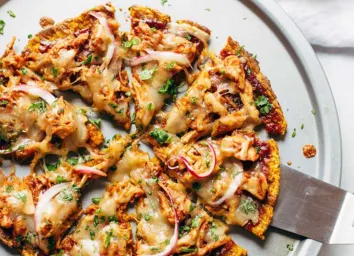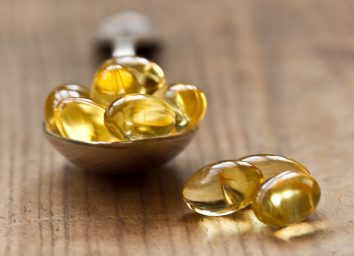The Best-Ever Eating Habits for Weight Loss
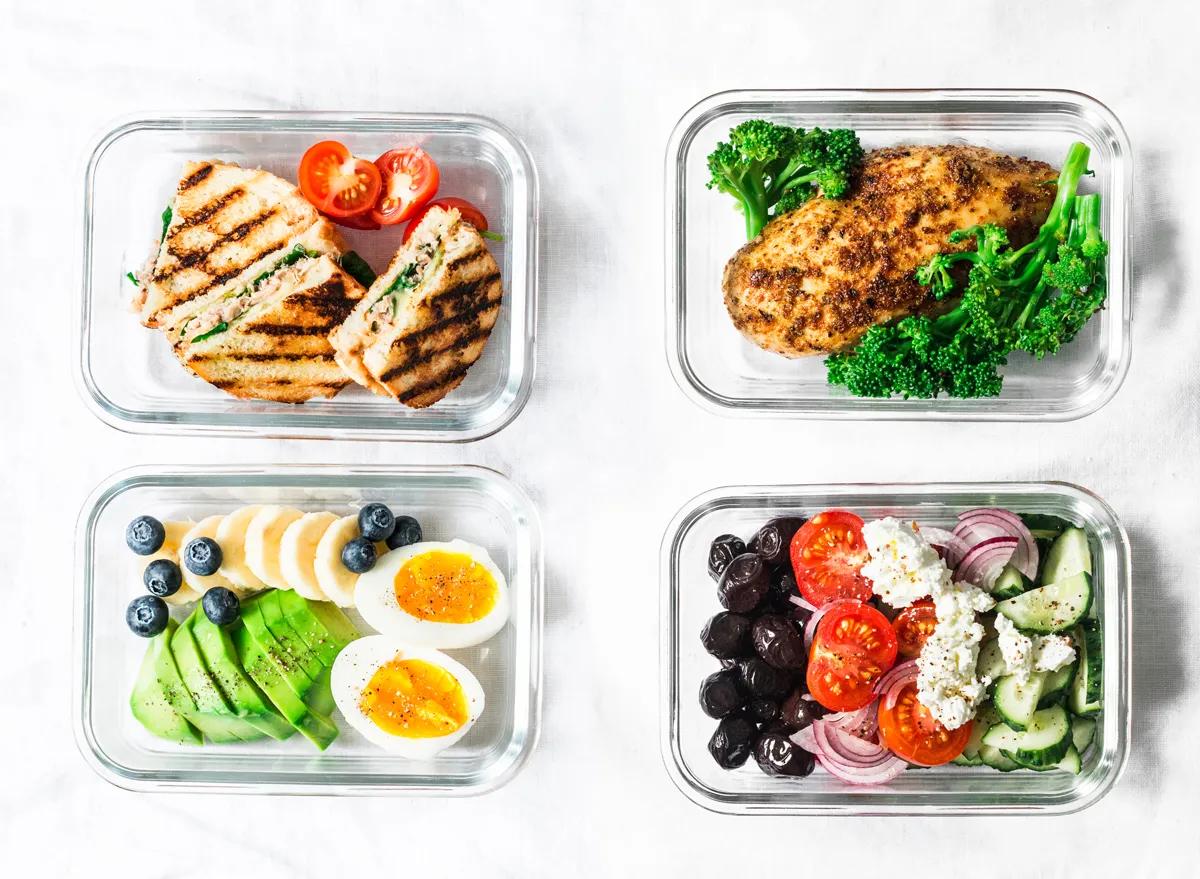
Have you tried every core exercise in existence but find that your abs just refuse to make an appearance? Besides maintaining a consistent—and vigorous—workout schedule, the key to getting strong abs is in your kitchen. These best-ever eating habits can help lead to rapid weight loss and will turn your no-pack into a whoa-pack.
Get toned and tight, and craft your winning routine in the kitchen with these 11 essential eating habits. And for more healthy tips, check out our list of 21 Best Healthy Cooking Hacks of All Time.
Eat five or six meals.
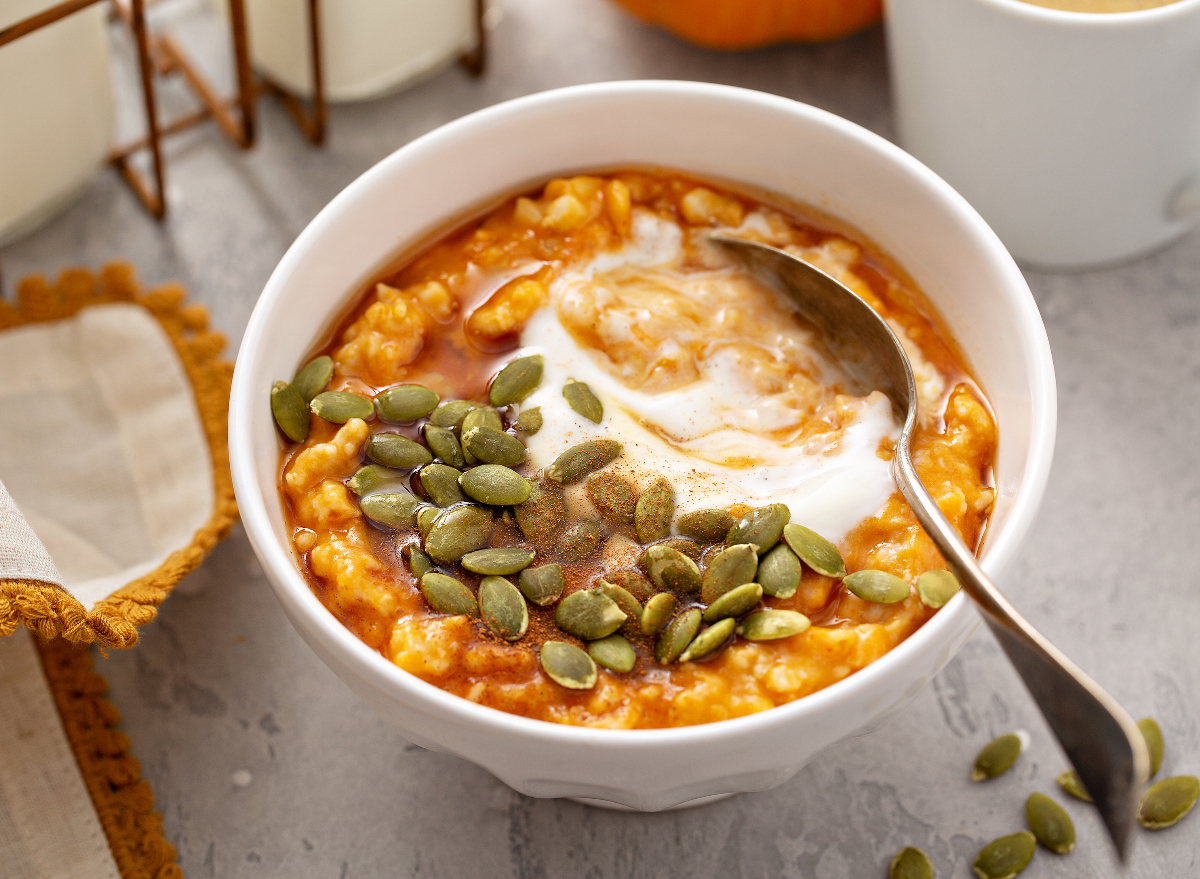
Despite diet experts and new research constantly telling you otherwise, many people still consume the bulk of their calories in two or three large meals each day, often—in an attempt to slim down—going for hours at a time eating nothing in between. Sure, you can lose weight on a reduced-calorie three-meal plan, but you can’t make your body burn fat more efficiently, which is key to long-term weight loss.
A nutritious meal or snack about every three hours keeps blood-sugar levels stable, feeds your body a steady stream of necessary nutrients, and helps control hunger-induced cravings for less-than-slimming snacks like sweets and fats. It also leads to more effective glycogen storage in the liver and muscle tissues, ensuring your body won’t cannibalize muscle as an energy source during your workouts. So make your meals mini and spread them out. If you have trouble fitting in extra eating times at work, prepare food ahead of time that you can zap in the microwave or eat cold. And stock your kitchen right with these 40 Foods Nutrition Experts Told Us You Should Be Eating Every Day!
Don’t let hunger be your guide.
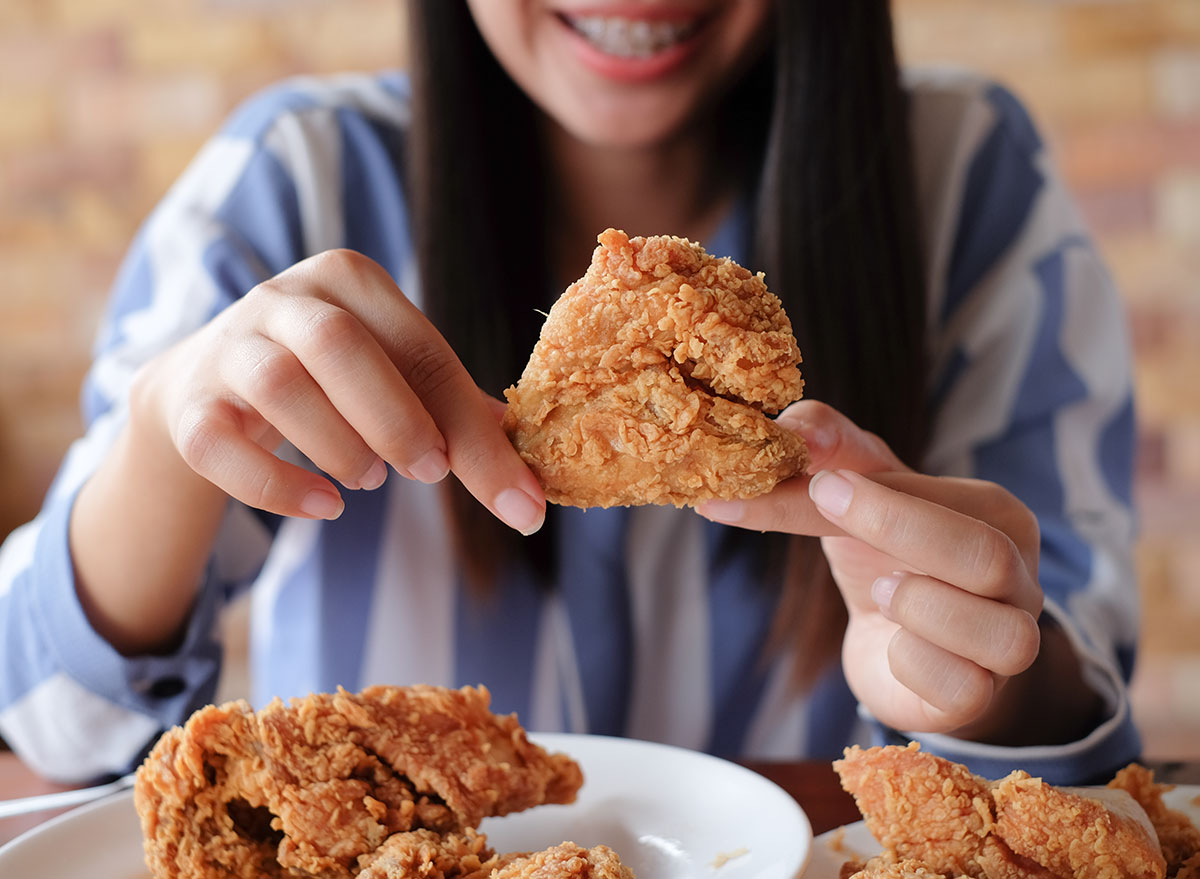
The human body is a bit confusing: By the time it tells you it needs nutrients, it’s already deficient. In fact, those hunger pangs are your body’s last-ditch efforts to convince you to eat.
Stay ahead of the curve by eating before your stomach starts growling. If you’re pressed for time, consider the following: A meal can consist of a four-ounce chicken breast, a small baked potato, and a salad, all of which can be made the night before and require minimal preparation time. Dining can also be as simple as a low-sugar nutrition bar—make sure to look for one substantial enough to replace a meal—or small protein shakes and bananas. If you’re curious, here’s How to Control Your Hunger Hormones to Lose Weight Fast, According to Experts.
Pinpoint your protein needs.
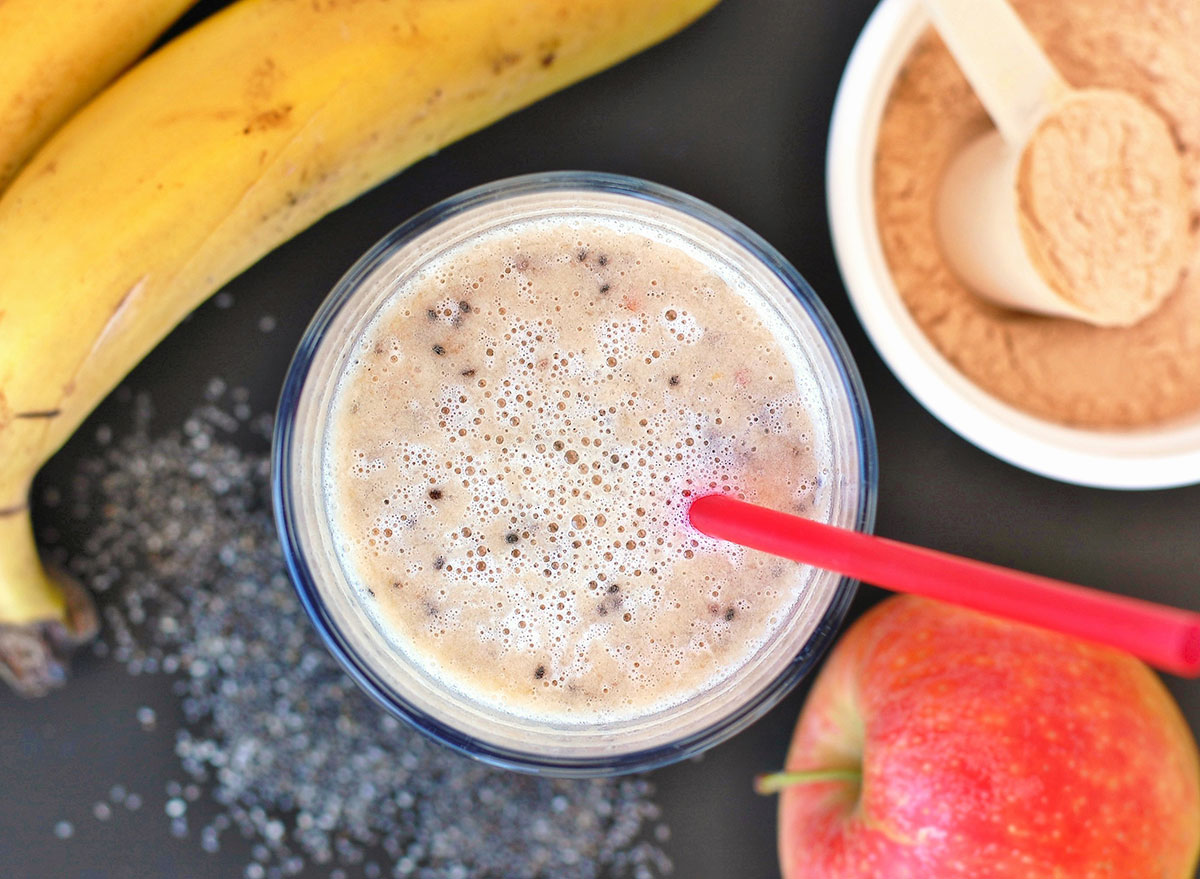
How much protein is enough? If you’re working a 9 to 5 desk job that you commute to by car, protein isn’t an issue. But for someone who’s active in sports and trains regularly, adequate protein is essential for losing fat and building lean muscle. Your safest bet is to get between 0.8 and 1 gram of protein per pound of lean mass.
When calculating that amount, use the weight you think you would look good at, especially if you’re 20 or more pounds overweight. For example, if an ideal weight for you would be 170 pounds, multiply that number by 0.8 grams: Your daily protein requirement turns out to be 136 grams, which translates to 27 grams of protein per meal (at five meals per day). That’s what you’ll get from about one small can of water-packed tuna or four slices of turkey breast deli meat. If you’re a vegetarian or a vegan, take a look at these 13 Great Protein Alternatives If You Can’t Find Meat at the Grocery Store that spur weight loss for some healthy inspiration.
Power every meal with protein.
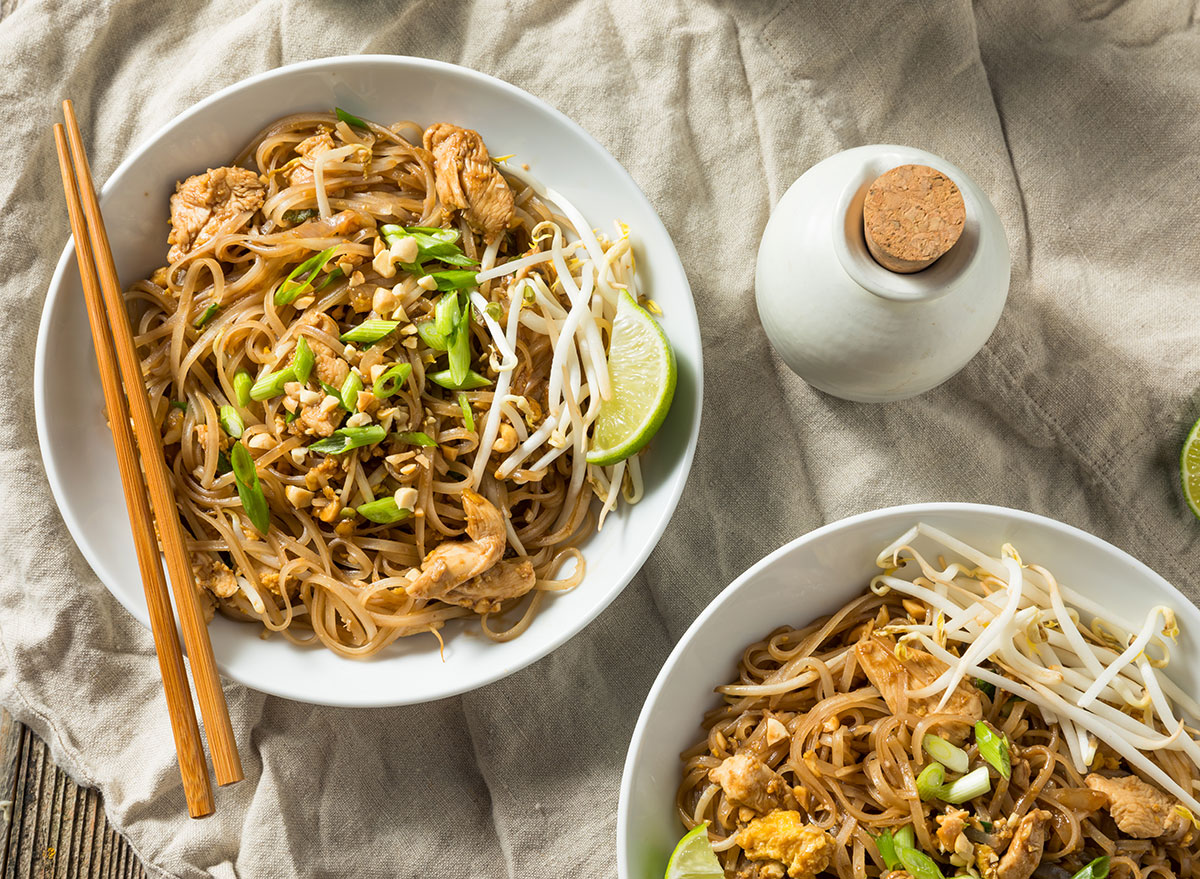
While eating anything raises your metabolic rate, protein boosts it the most. Chicken, turkey, beef, egg whites, and cottage cheese are just a few of the choices you have for high-rev foods. Protein is also essential to building muscle, and the more muscle you carry, the more efficiently your body will burn the fat you’re trying to fry. And don’t forget about breakfast! Get an early jump on your protein—deliciously—with a protein-packed breakfast that will keep you full, focused, and on track to getting abs.
Muscle burns calories even at rest. Fat, on the other hand, just sits there. So the last thing you want from your weight-loss program is a loss of muscle tissue. You can minimize muscle loss by getting enough protein delivered in relatively precise doses throughout each day. And for your body to put that protein to work for muscle building, you’ve got to log weight lifting time regularly.
Adjust your protein intake.
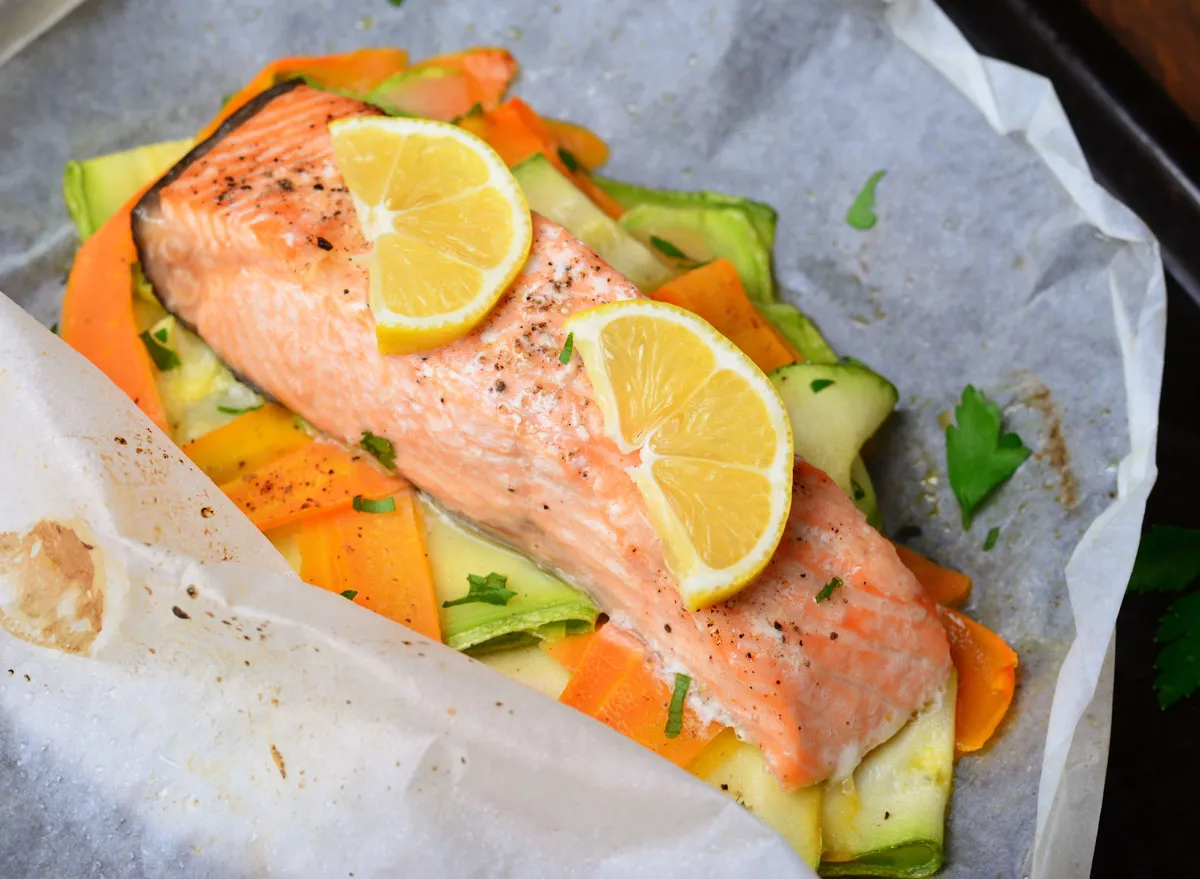
Keep track of your intake for a month or so and then make adjustments, since the protein calculations we have here are just guidelines. If your fat loss has hit a plateau and you aren’t suffering from overtraining syndrome (ironically, too much time at the gym will slow your fat furnace) bump up your protein a little. If you’re gaining a little fat, cut back slightly. There should be little need to go beyond one gram of protein per pound of lean mass.
Diversify your carbs.
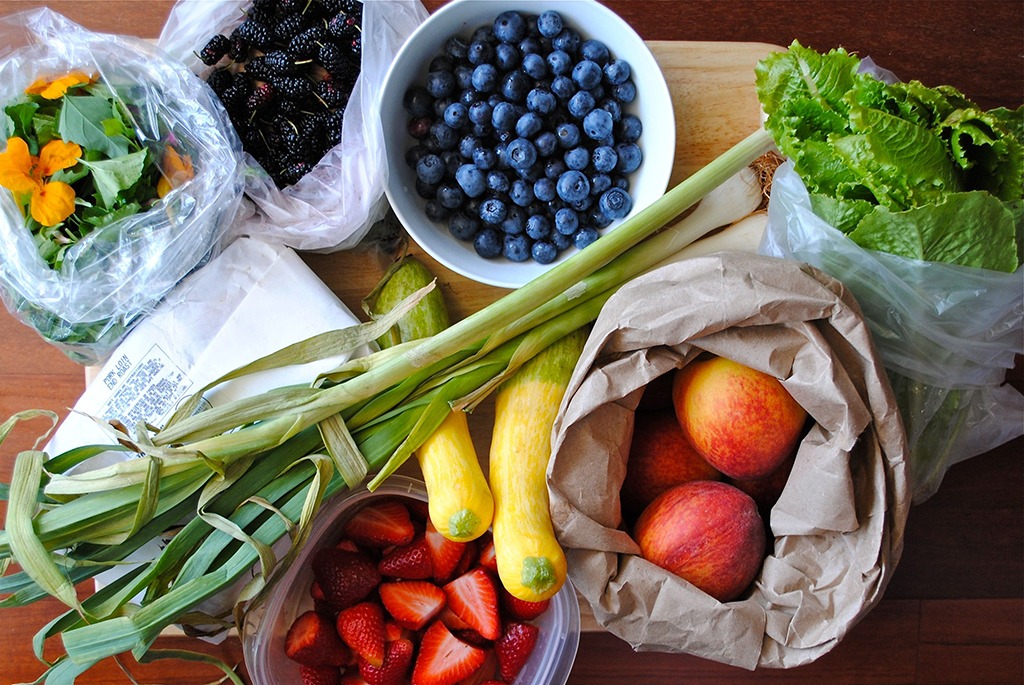
When planning meals, you may be tempted to stick to a few familiar sources of carbs. But your system works better when you keep it guessing, so don’t let yourself get caught in a rut. Eating a variety of carbs, even some simple sugars, is desirable for athletes, according to the British Journal of Sports Medicine.
Keep in mind, that’s not an invitation to gorge on Froot Loops or candy bars. Foods like potatoes, brown rice, pasta, and vegetables should make up the bulk of your carbs. As a rule, you shouldn’t eat more than two or three grams of carbs per pound of body weight. Many people overdose on carbs, thinking them “safe” simply because they’re low in fat. But your system doesn’t discriminate: It stores any excess calories—whether from protein, fat, or carbs—as fat.
Alternate carb volume.
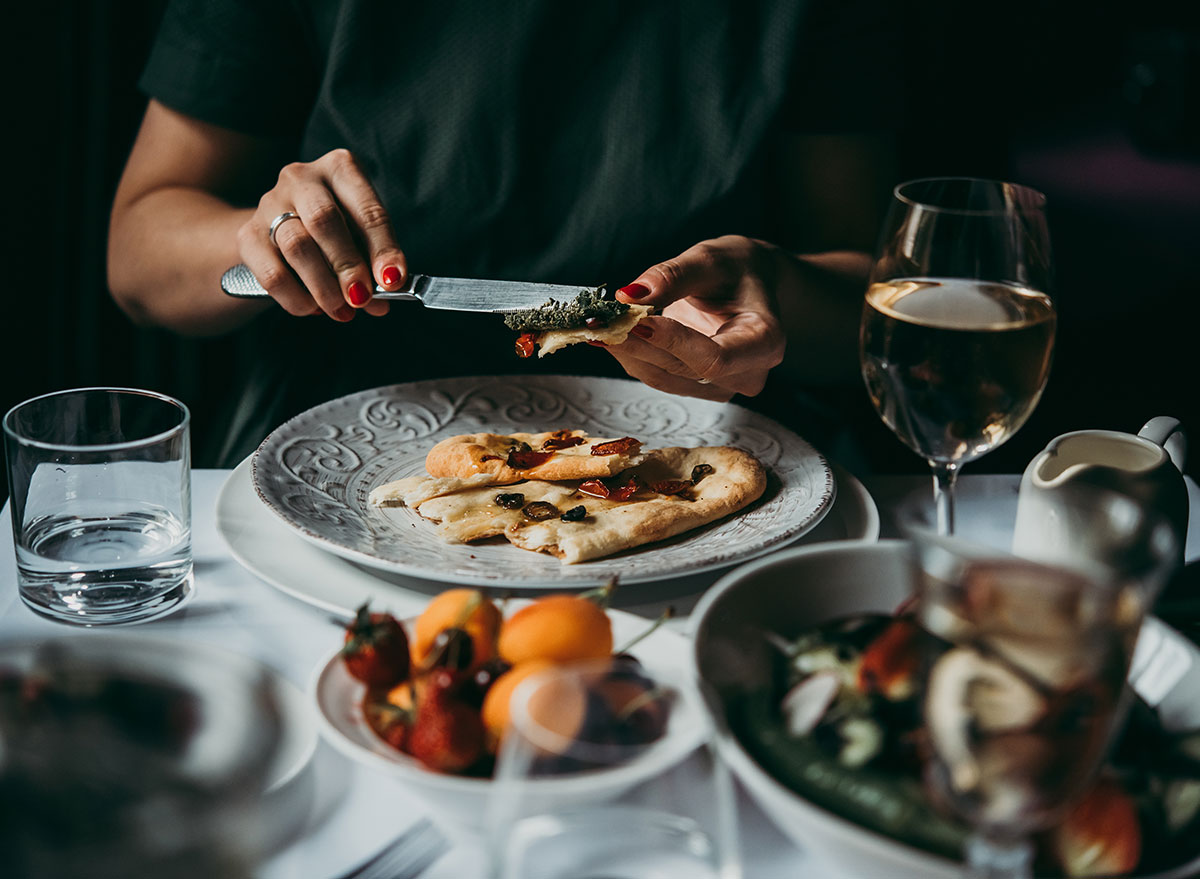
Once you’ve figured out your daily carb requirement, the tendency is to eat equal amounts of carbs at every meal. This approach works quite well in the early phase of a weight-loss plan because it trains your body to expect a certain amount of essential nutrients on a regular schedule. But over time, your body will achieve homeostasis, meaning it will adapt to the pattern and work just enough to maintain its current balance of lean mass to fat stores. To continue getting leaner, you must continue adapting.
Give yourself a carb shock.
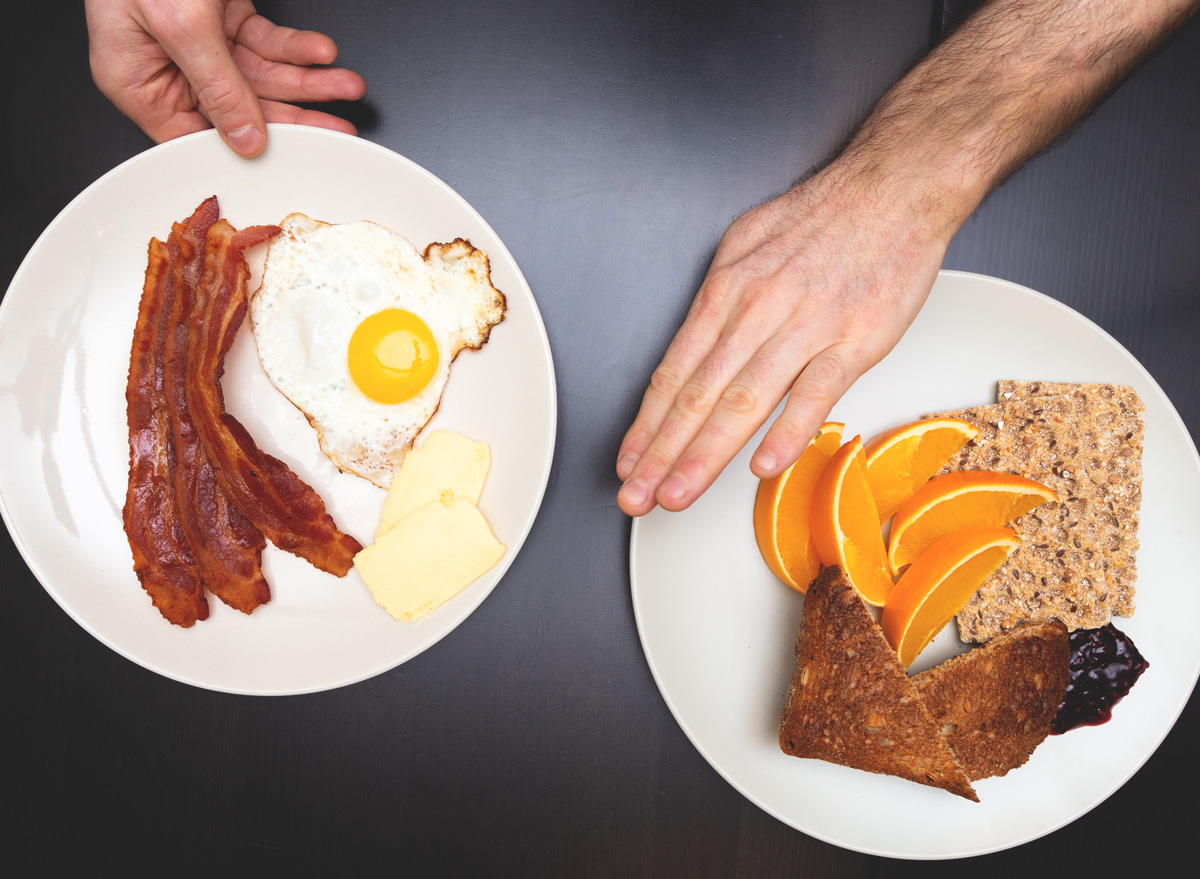
Assuming you’re not diabetic or prone to hypoglycemic episodes, another way to keep your body guessing is to restrict carb intake (about 125 grams per day) for 48 hours every two or three weeks. Your body will search for alternate energy sources, breaking its rhythm and revving the metabolism. Because it has been glycogen-depleted, your body will quickly use sugar carbs for energy when you return to taking in normal levels.
Do not go low-carb for more than a couple of days or take in fewer than 125 grams per day. Critical heart and brain functions rely on carbs. Depleting sugar stores can make you lethargic, foggy-headed, and, yes, even hanger, so try this phase on weekends when you don’t have to deal with workweek stressors like deadlines and demanding coworkers.
Drink up.
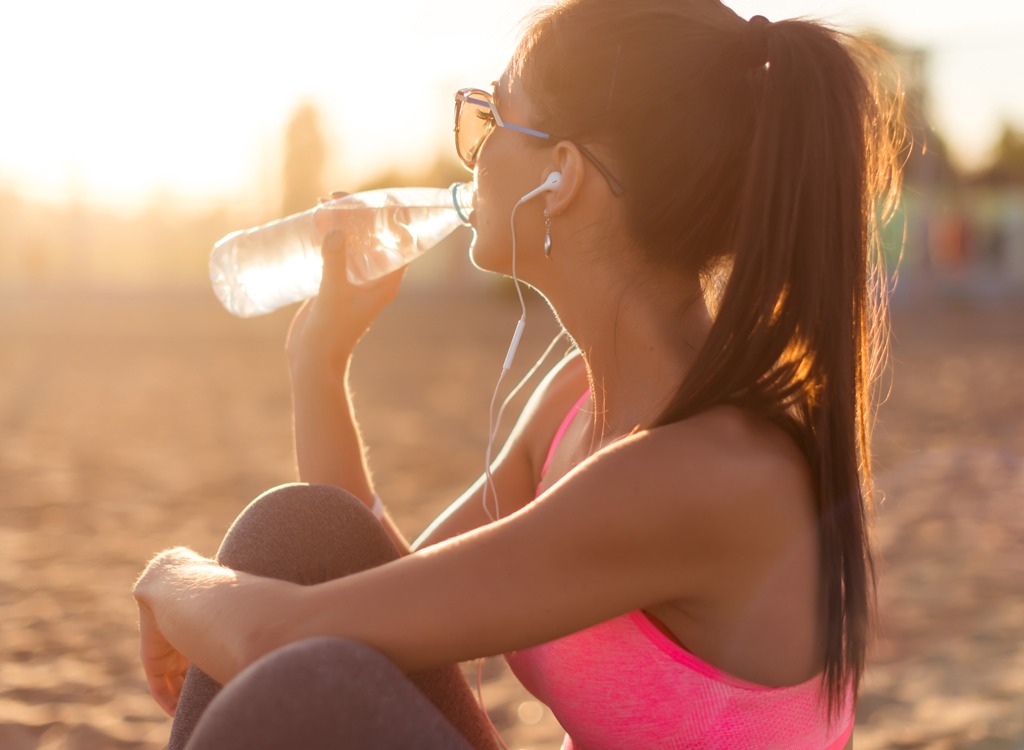
Your body cannot effectively change carbs into energy without ample water. And you can’t deliver essential amino acids to muscle tissue without adequate water, either. Not only will your workout sessions suffer, but insufficient liquids in your body will also hinder fat breakdown.
Don’t wait until your thirst signals the first stage of dehydration, which means you’re already too late. You must stay hydrated. Drink often throughout the day, and especially before and during a training session. If plain water bores you, try mixing up an easy batch of detox water, loaded with cleansing citrus. Try to get at least 10 cups of water per day, although up to a gallon is okay. Or calculate what your specific body needs—here’s How to Make Sure You’re Drinking Enough Water.
Start the day right.

Your first meal when you wake up and after working out should contain your largest carb intakes of the day. Your body’s glycogen stores are depleted when you wake up; replenishing them quickly is crucial to physical and mental functioning. A serious weight-training session depletes glycogen stores. Consume a mix of simple and complex carbs along with a protein within 60 minutes after a workout to restore your energy and ensure long-term muscle recovery. Here are the 10 Best Healthy Carbs You Should Have for Breakfast.
Finish light.
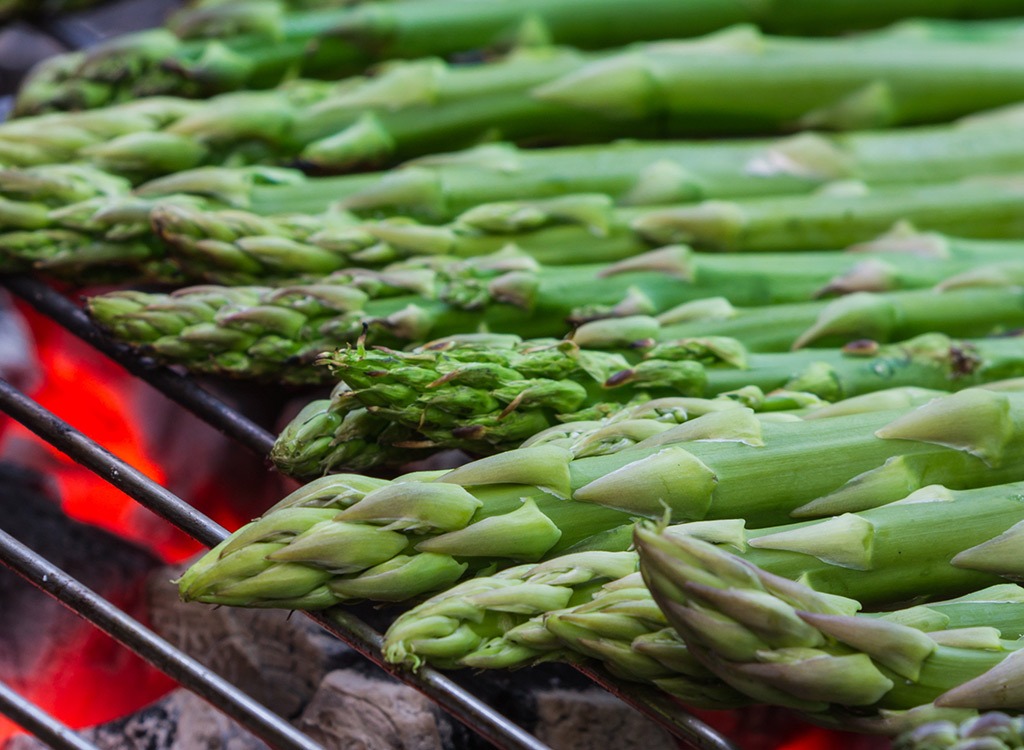
Your last meal (or two, if you’re eating more frequently) of the day should emphasize protein rather than typical slow-burning carbs like pasta. The carbs you do ingest should be the “wet” kind contained in high-water, medium-fiber foods such as cucumbers, leafy green salads, tomatoes, and steamed asparagus. High-fiber, low-water foods leaching water out of your system; wet carbs, on the other hand, allow you to maintain relatively adequate levels of water during the night since you can’t drink while you sleep. Here are 63+ Best Healthy Low-Carb Recipes to get you started.
Here’s a bonus tip: Get in the habit of eating fish as part of your last meal of the day. Fish makes for a lighter meal, and it’s a good way to replenish amino acids while getting essential fatty acids. Fish is healthy as well: The American Heart Association recommends at least two servings of fatty fish (such as salmon and tuna) per week.
Story courtesy of Men’s Fitness
